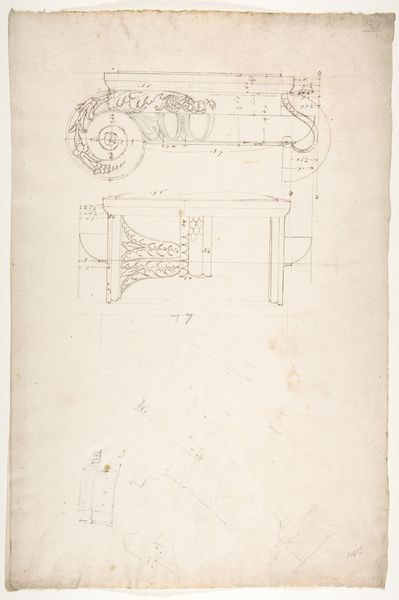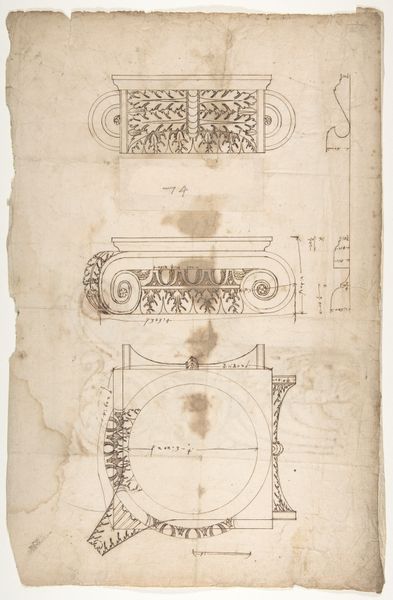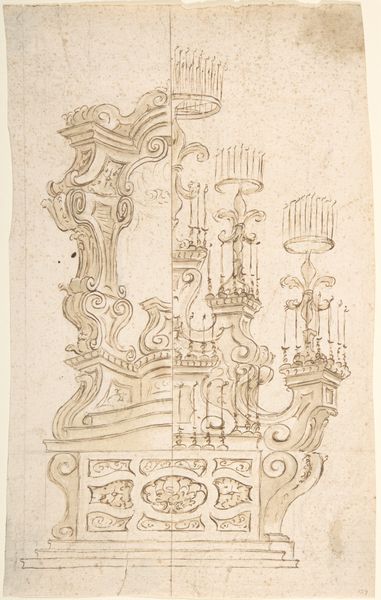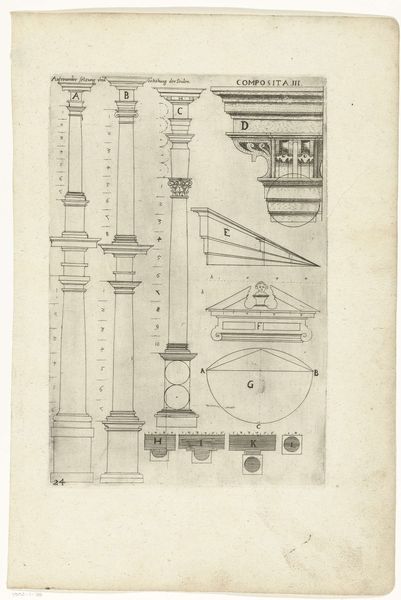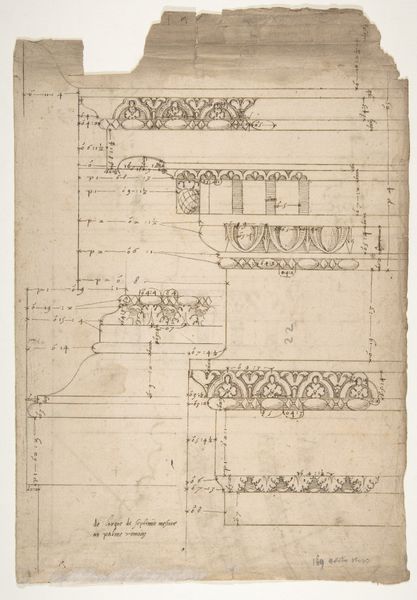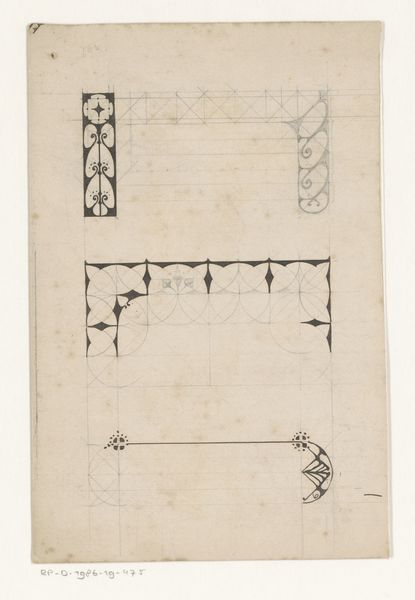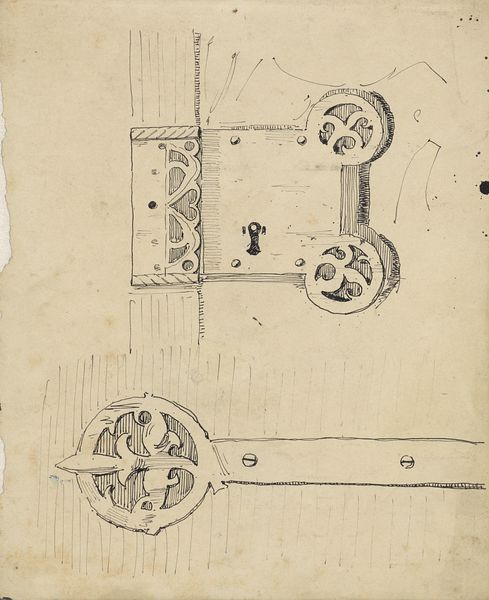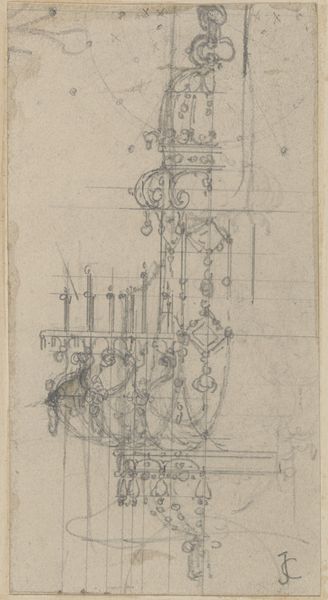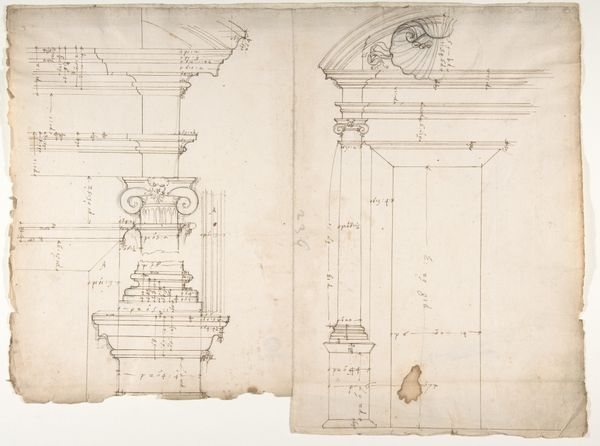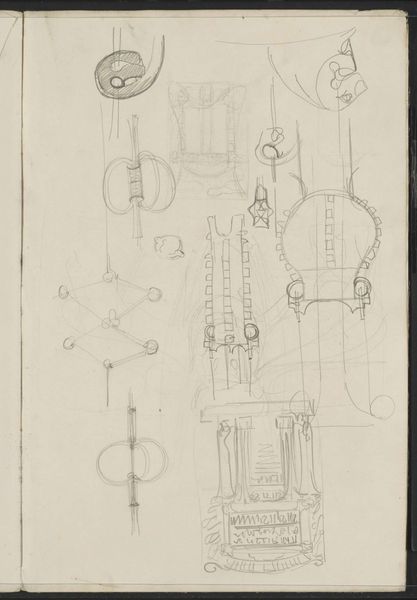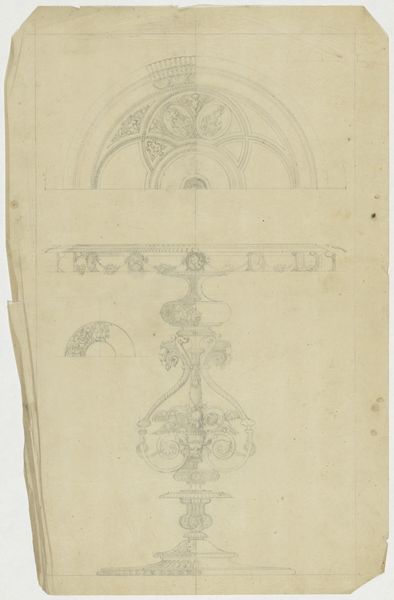
Unidentified, Ionic capitals, two front and side elevations (recto) Doric impost, elevation of entablature (verso) 1500 - 1560
0:00
0:00
drawing, print, etching, ink, pen, architecture
#
drawing
# print
#
etching
#
etching
#
11_renaissance
#
ink
#
geometric
#
pen work
#
pen
#
architecture
Dimensions: sheet: 17 5/16 x 11 7/16 in. (44 x 29 cm)
Copyright: Public Domain
Editor: This is an architectural study, "Unidentified, Ionic capitals, two front and side elevations (recto) Doric impost, elevation of entablature (verso)", dating from 1500 to 1560, made by an anonymous artist using pen, ink, and etching. The composition appears to be quite technical. How do you interpret this work? Curator: Well, beyond the obvious architectural elements, I see a fascinating intersection of power, knowledge, and representation. This drawing comes from a period of intense rediscovery of classical forms, but this wasn't a neutral process. It was tied to the construction of Western identity and authority. Consider, for instance, who had access to classical texts and ruins, and who was commissioned to create these drawings. Do you think that might be relevant here? Editor: I never thought about access as being a part of it! I guess I assumed knowledge of the classics was universally available at the time. But you're right, the elite definitely controlled those narratives. So, is this drawing part of establishing a specific kind of power? Curator: Precisely. The emphasis on classical architecture wasn’t just about aesthetics; it was about claiming a direct lineage to the perceived grandeur and rationality of the Roman Empire, subtly erasing other histories and architectural traditions. Who do you imagine this drawing being for, and what was it meant to achieve? Editor: Possibly to provide measurements or guidance for people capable of erecting similar structures? If so, that also would've been an exclusive group with capital and knowledge. I'm understanding now, it’s not *just* a drawing. Curator: Exactly. It’s a document that embodies and reinforces existing social hierarchies. Considering architecture’s role in shaping social space, these designs carry significant ideological weight, quietly promoting certain values and power dynamics. Editor: Wow, that's given me a lot to consider, far beyond the face value of architectural drawings. Curator: It highlights how art, even seemingly technical drawings, always exists within complex webs of historical and social power.
Comments
No comments
Be the first to comment and join the conversation on the ultimate creative platform.
